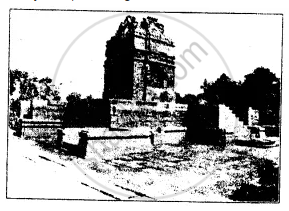Advertisements
Advertisements
Question
Regarding archaeological sources to reconstruct the Age of the Gupta, explain what significance do the following have:
Nalanda University
Solution
It was the most renowned educational institution of ancient India. Located at Nalanda in Rajagriha in Bihar, it was originally set up by Sakraditya in the 5th century AD during the reign of Kumaragupta-I. The University of Nalanda had imposing buildings. There were at least 8 colleges built by different patrons including one by Balaputradeva, King of Sumatra. According to Hiuen Tsang, the whole university area was enclosed by a brick wall. Nalanda University provided various facilities to the students for their studies. There were three great libraries called Ratnasagar, Ratnodadhi, and Ratnaranjak. There were more than 10,000 students including teachers of all kinds. They came from Korea, Mongolia, Japan, China, Tibet, Ceylon, and various parts of India. The subjects of study at Nalanda University were all four Vedas, logic, grammar, medicine, Samkhya, yoga, Nyaya, and the Buddhist works of the different schools. It was not an ordinary university. It was a post-graduate institution to which admission was very difficult. Before admission, an examination was held in which hardly 20% of students passed and the rest of 80% were rejected. Only the most brilliant was admitted to the University. Nalanda continued to be a beacon of light up to 12th century AD when it was destroyed by Mohammad-bin- Bakhtiyar Khilji, a general of Mohammad Ghori. Today only the remains of its magnificence and glory can be seen.
APPEARS IN
RELATED QUESTIONS
Name two dramas and two epics written by Kalidasa.
Mention two important features of the paintings at Ajanta.
How can we say that Harshavardhana was a patron of learning?
Name the literary work of Perundevanar.
Study the picture given here and answer the following question:

Where is this Vishnu Temple located?
The Pallava period recorded brilliant achievements in the fields of literature, art and architecture. In this context explain: Architectural features of the Dharmaraja Rath
The Pallava period recorded brilliant achievements in the fields of literature, art and architecture. In this context explain:
Their patronage to literature.
Study the picture of Dharmaraja Ratha and answer the following questions:

Name the place and the State where the Ratha is located?
What contribution did Aryabhatta make in the field of science, astronomy, and mathematics?
With reference to Golden Age of Indian Culture answer the following questions.
Briefly describe growth of Sanskrit literature.
